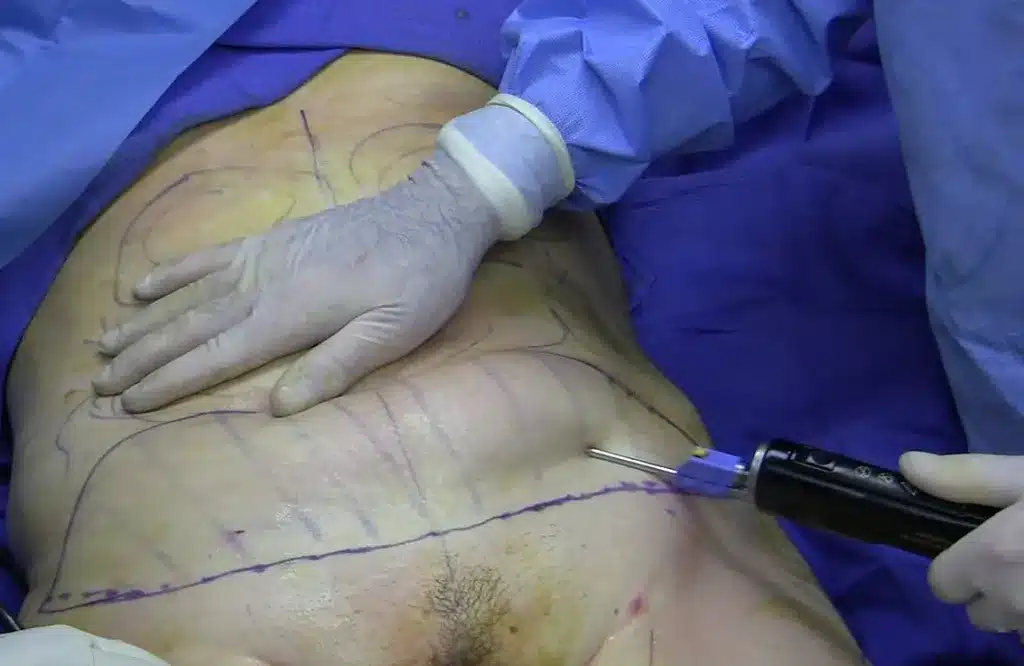Key Takeaways
- Setting realistic and attainable body goals is important for staying motivated and developing a healthy, positive self-image. This stability is integral for fostering a healthy relationship with your body.
- Take a look inside your closet, to make sure your wardrobe works with your new body shape and lifestyle. Always choose the pieces that make you feel the most confident, and which best suit your personal style.
- Embrace clothes that work hard for you and invest in timeless, high-quality staples that easily shift from meetings to outings.
- Comfort and ease of fit should be a key consideration in your wardrobe, allowing you to easily move from one activity to another with confidence.
- Clear out what you haven’t worn in a year, and make room for clothes that fit your new goals and style.
- Utilize accessories as a clever opener to level up your looks and showcase your unique personality, maximizing your style without sacrificing comfort.
Hitting your body goals is a major accomplishment, and dressing for success afterward can help make this accomplishment even more rewarding. This is where clothes come in, as they’ll help you highlight your progress and turn up your confidence.
It’s about discovering the right styles that suit and flatter your body shape and make you feel comfortable and confident. Opt for cuts and styles that accentuate all the right places and leave you feeling confident.
Whether it’s a tailored blazer for work or casual wear for weekends, each choice can amplify your sense of accomplishment. Focus on things such as fabric, fit, and color to develop a closet that suits your altered form.
Using clothing to express yourself fosters a sense of pride and can positively influence how others perceive you in various settings.
Understanding Body Goals
Having specific body goals will help you stay better organized and in the right headspace to ensure your success. Clearly defining these goals gives you a roadmap to getting your body where you want it. They’re not merely a superficial effort to “body positive” the world, but rather focused on cultivating a caring, curious relationship with your body.
Aim for concrete fitness achievements or cosmetic upgrades that align with your goals. Taking those steps can make a huge difference to your enthusiasm! Knowing short-term goals from long-term goals is key to finding balance. This focus provides greater clarity, which helps you pivot your tactics as you follow the path.
What Are Body Goals
Body goals are not one-size-fits-all, they aren’t even one-size-fits-each-person. They include broader health and fitness goals or aesthetic goals that reflect one’s values. Whether it’s adding muscle, shedding pounds, or firming up certain body parts, these objectives need to sound familiar on a personal level.
Examples of short-term goals are losing a few pounds, and examples of long-term goals are staying active and healthy. They promote a healthy and fulfilling relationship with your body, promoting change and acceptance at all stages of life.
Importance of Body Goals
Knowing what your body goals are is a key motivator for helping you do what you need to do every day. They do not just promote physical health, they foster mental well-being and self-esteem. The link between body goals and self-improvement is deep.
For example, with goal setting comes the potential to improve one’s diet or engage in regular physical activity. This has a ripple effect on overall well-being, reinforcing it as a fundamental form of self-care that is essential to living.
Impact on Self-Image
Besides, body goals have an incredible power to change body image and increase self-esteem. This transformation cultivates a sense of self-value, bolstered by psychological rewards such as improved resilience. The social impact is equally profound; your clothing choices significantly influence who you can interact with and the relationships you deserve to have.
As one Journal of Experimental Social Psychology study showed, what you wear can directly impact your mental state and how you see yourself. Knowing your worth through professional attire isn’t just a matter of style; it’s a way to affirm that you are worthy each day.
Investing in classic, timeless pieces—like suits and jackets—while incorporating sustainable styling in your everyday clothing can help keep fashion fun and fresh, not frail.
Adapting Wardrobe Choices
1. Assess Current Wardrobe
Here’s a bullet list to help:
- Items that are simply outgrown or no longer match your new body aspirations
- Items that increase your confidence and help you feel in control of your life
- Practicality of each item matching your day-to-day life and wardrobe through this transition
When your clothes fit you well, you’ll feel different about yourself. Nothing gives you the confidence of a well-fitting shirt or pair of pants.
It doesn’t mean designer labels, it means those pieces in your wardrobe that have you striding with confidence.
2. Identify New Styles
It’s time to explore new fashion styles:
- Find out what works with your new body shape and style
- Experiment with silhouettes that enhance your appearance
- Discover the research-backed trends that suit your personal aesthetic and body objectives
It’s extremely valuable to try on various styles to see what looks and feels the best.
Whether it’s a chic, well-tailored blazer or a cascading gown, the style you choose can help you command the room with comfort and confidence.
3. Invest in Versatile Pieces
Focus on quality over quantity:
- Choose flexible clothing that can be repurposed in various ways.
- Identify wardrobe staples that transition from casual to professional
- Choose timeless pieces that stay stylish through changing trends
Wardrobe staples keep you looking sharp.
Imagine timeless denim, an ivory blouse, or a LBD. These can be very formal or very casual depending on how you decide to style them.
4. Prioritize Comfort and Fit
Ensure your clothes fit well:
- Choose fabrics that feel good against your skin
- Recognize the importance of tailoring for a perfect fit
With clothes that fit you perfectly, you look great and feel amazing while moving comfortably.
5. Experiment with Colors and Patterns
Think about colors and patterns:
- Colors that enhance your mood and boost confidence
- Patterns that flatter your body shape
- Test color combinations to find your personal style
Bright colors and bold patterns are a great way to express your unique personality.
They bring life to your closet and make you memorable.
Cleaning and Reorganizing Closet
Making a plan for a closet cleanout is a fantastic first step towards building a professional wardrobe. While not everyone has ten hours to devote to it, tackling the task little by little can make the process feel more manageable and less overwhelming.
Start with Your Pants
Start with your pants—pull them all out and try each one on. Pull out any clothing you haven’t worn in over a year and make a plan to donate or resell those items. One tip I always recommend is to have a small basket in your closet.
If an item of clothing doesn’t make you feel your best, into the donation basket it goes. Instead of just putting it back in your closet… After a few months, donate the entire contents of the basket. This process clears space for new clothing that may better match your body goals and your new aesthetic.
Declutter Unused Clothing
Instead, think about what you want to keep or get rid of to make for a more effective closet clean-out. Reconsider emotional attachments to clothing and whether or not they serve your new goals.
Clearing out old pieces to make way for new ones that represent your changed and improved personal style is equally as important. Decluttering by season allows you to rotate pieces and maintain a more dynamic and fresh wardrobe.
Organize by Size and Season
Group clothes by size to make choosing outfits easier, and set up your closet according to the season. This group makes sure that the right clothes are available.
Think about storage for off-season clothes to keep them organized and at the ready. Eating seasonal rotation helps keep your wardrobe fresh and functional.
Create a Capsule Wardrobe
Create a capsule wardrobe with interchangeable basics, prioritizing quality over quantity to get pieces that work in lots of different environments. This method makes it a lot easier to choose your outfits.
Plus, it helps make sure your wardrobe is in line with your personal style and body goals. On the weekends, take a few minutes to prep outfits to streamline getting dressed each day.
Finding Comfort and Confidence
Comfort is essential for confidence, especially when it comes to your professional wardrobe. Feeling comfortable in your clothing choices is crucial for projecting confidence. When you wear outfits that align with your body goals, you not only look great but also feel amazing every single day. Wearing quality clothing that fits well increases your confidence, setting a positive tone for the day ahead!
Choose the Right Fabrics
Choose breathable and flexible fabrics that work with your body type and movement. Breathable materials such as cotton and bamboo provide all-day comfort and confidence without compromising style or professionalism.
Play around with different textures, like cozy knits or buttery silks, to find out what you love against your skin. As a personal stylist I’ve seen how the right choice of fabric, drape, color and fit will radically affect a client’s confidence and self-image.
Embrace Personal Style
Identifying which archetype your personal style fits into will help inform your clothing purchases. Honor your special brand of self-expression by introducing anchor items with personality, such as a well-loved leather jacket or eye-catching baubles.
Just like you, as you grow and reach different body goals, your style should evolve with you. It’s a common adage, but dressing for success goes way beyond the aesthetics and really affects your quality of life and mindset every day.
Dress for Different Occasions
- Casual outings: Jeans with a tailored top
- Formal gatherings: A sleek dress or tailored suit
- Work: Versatile blazers and classic trousers
- Leisure: Comfortable athleisure wear
Having a plan with multifunctional pieces eliminates the panic of needing an outfit at the last minute. Having the right clothes for work, social functions, and play makes sure you go into each endeavor focused on what you should be doing.
In the long run, investing in better quality pieces will save you money by keeping you from making impulse buys and will help your wardrobe last longer.

Accessorizing for Success
Accessorizing isn’t merely adding flash—more than a great way to express your individuality, accessorizing has the power to SAVE your wardrobe. When I started my own journey to dressing for success, Megan helped me pick out statement accessories. She would demonstrate how a statement necklace or funky earrings would take a basic outfit and make it great.
Bigger, bolder colors and out of the ordinary designs break through the noise and help you stand out. For a more unified appearance, strike a perfect harmony between these focal features and the subtler pieces. Megan taught me how to shop and dress in a way that helped my clothes reflect my brand. Her advice changed my style game forever!
Select Statement Accessories
Knowing which ones are the key pieces that can really elevate your outfit will help. Whether it’s a bold scarf or a snazzy pair of shoes, these accessories can serve to attract good attention. Experimentation is what is needed here.
Vibrant colors and unexpected prints can have a strong impact, but remember that balance is key. Overdoing it with too many statement pieces can be visually blinding, so make sure to pair more extravagant pieces with simpler ones to keep your overall look chic.
Match Accessories with Outfits
Coordinating your accessories with your outfit takes a keen eye for detail, like making sure your colors complement each other and your overall style is cohesive. Here are some combinations to consider:
- A classic watch paired with a tailored blazer
- Chunky bracelets with casual weekend wear
- Delicate earrings with a formal dress
With this strategic use of accessories, you can draw attention to your favorite features and emphasize them, increasing your confidence. According to research, 80% of people make judgments within the first 7 seconds, so your outfit—and accessories—will play a big part in first impressions.
Conclusion
We know that reaching whatever body goals you’ve set for yourself can be a huge accomplishment. Now dressing for success to celebrate that victory? That makes it even sweeter! Having a closet filled with clothing that fits your new shape and really expresses your style will help you feel more confident. Get ready to refresh your wardrobe with stylish yet relaxed pieces that highlight your commitment to body positivity and progress. Accessories are the icing on the cake, bringing the fun, flirty, and fabulous to your wardrobe.
It’s really just about being able to express this new you comfortably and confidently. Celebrate your achievement by dressing in a way that feels right, fits well, and makes you proud. So, are you ready to join us on this journey? Go home, and dig through your closet to find the clothes that will help you feel on top of the world. We can’t wait to see your style and creativity burst through.
Frequently Asked Questions
What are body goals?
Body goals are fitness or aesthetic goals that a person sets for themselves, which can significantly influence their clothing choices. Understanding your body goals will help you dress for success, allowing you to highlight your achievements and create a professional wardrobe that reflects your unique style and personal brand.
How should I adapt my wardrobe after reaching my body goals?
Consider both fit and comfort in your professional wardrobe. Wearing well-tailored clothing that showcases your new curves not only boosts your confidence but also creates a positive impression. By investing in quality clothing, you can make your style more timeless and effortless while honoring your hard-earned body goals.
Why is cleaning and reorganizing my closet important?
A fresh, well-kept professional wardrobe will make it much easier to get dressed with clothes that now fit and flatter your transformed body. Beyond that, it allows you to really pinpoint gaps in your wardrobe, making shopping for quality clothing more productive and targeted on your new evolved style.
How can I find comfort and confidence in my new wardrobe?
Make fit and fabric your first and second choices in your professional wardrobe. Clothes that fit well and feel comfortable will enhance your confidence. Soft, breathable fabrics are a fantastic choice for everyday wear. Experiment with different styles to discover what aligns with your personal style archetype. Ultimately, confidence shines when you’re comfortable in your outfit, making a positive impression.
What role do accessories play in dressing for success?
Accessories are the icing on the cake, bringing your new look together and showcasing your unique style. They do that by adding flair and sophistication. A bold statement necklace or chic belt can enhance your professional wardrobe, leaving you looking fresh and feeling empowered to take on the world.
How can I ensure my wardrobe reflects my personal style after achieving my body goals?
Consider what styles you like best to create a tuned wardrobe. Only keep what reflects your personal vibe and professional attire. Try out a few trends to find what best fits your body goals, while exploring styles that mirror your journey and success.
How can dressing for success boost my confidence?
Self-esteem is closely tied to our clothing choices and how we present ourselves. Wearing quality clothing that fits your body type enhances confidence and projects a positive impression, empowering you to feel successful.











